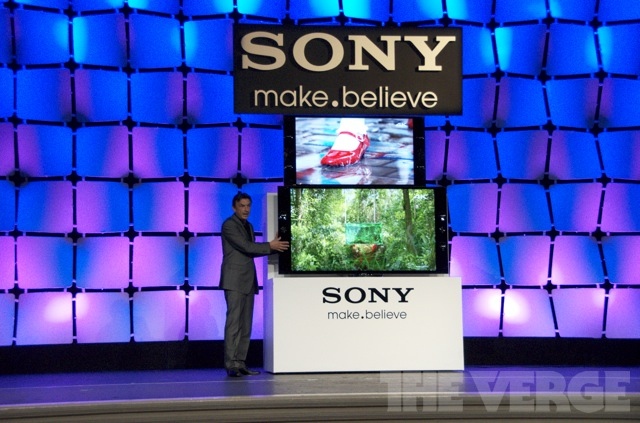4K doesn't feel like 3DTV
At this year’s NAB Show, 91K people came to see 4K for themselves.
Compatible production and post tools were everywhere to be seen, causing some to cynically remark that the format was “another CE-industry motivated futuristic technology, like 3DTV, being shoved down our throats.”
Yet in speaking with vendors and show attendees, it was clear that people, including major sports leagues and television production companies, are serious about using it when appropriate and making it work for consumers. Sports leagues like MLB Networks and Fox Sports have already used it for Super Slow-motion replays that look stunning in their clarity. From cameras to new compression algorithms (HEVC) that make these larger file-sized programs suitable for satellite and IP delivery, there appears to be a value-add to acquiring in the resolutions 4 and even eight times higher than standard 1080 HD.

Countless demonstrations of 4K displays populated the exhibit show floor and, at least to me, it seemed to a make sense that this is the next logical step in broadcasting's evolution. We might not see it in homes until 2016, when the ATSC 3.0 spec is better defined (and perhaps standardized), or even later, but the nearer term solution for getting UltraHD programming into the home could be a store-and-forward model, ala, Apple TV, Netflix, Roku or Xbox 360 boxes. I’m told it’s already being tested. There are even YouTube videos in 4K resolution (don't ask) available online now.
The HEVC compression necessary to make this practical was also on display at the NAB Show, with some showing results of as low as 5 Mbps transfer speeds. People in this business like to brag about numbers and this year’s show was no exception, but it shows that the technology is there to make it practical for content distributors looking to differentiate themselves from the pack. Companies like Elemental Technologies (software) Ericsson (hardware and software), Fraunhofer (hardware), Harmonic (hardware and software) and Rovi (software), to name a few, were all showing HEVC decoding and touting the virtues (and feasibility) of a new channel with improved image quality.
I also heard that a sports production company in the UK called Telegenic Productions is building a live production truck with Sony technology (and its installation services) that is capable of acquiring and producing a sports event in 4K. The truck will be ready for the World Cup in Brazil, where there is sure to be a multitude of matches shot and distributed (via satellite) in 4K.
The difference between 3DTV and 4K here is obvious as the screen you view it on. The only impediment is cost. If you can afford a 4K TV, and the prices are quickly coming down, I believe there's potential. Last year Sony was saying 4K TVs would cost about $15,000. This year the company showed a 55-inch model for under $6,000 and a 65-inch TV for $8,000. This might still seem a bit steep for the average consumer, but at these prices we’ll soon start to see retail outlets and more and more product demonstrations displayed in 4K. That will wet consumers’ appetite for the new display technology. Yes, in a reversal of recent years past, the professional market will drive the consumer electronics market.
The professional video industry's #1 source for news, trends and product and tech information. Sign up below.
Last week I wrote in my blog about how the UltraHD form factor (it's the same as current HDTV models) would doom the technology to failure with consumers. After speaking to the industry at NAB, I’m changing my view. It will still take many years before we see it in our living rooms in any real numbers, but for me, 4K does not feel like 3DTV—8K does, in terms of immersive picture quality—and that’s foreshadows a higher resolution future for everyone.
